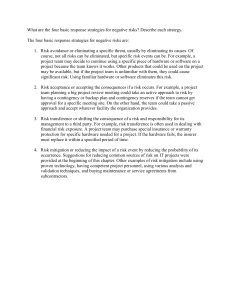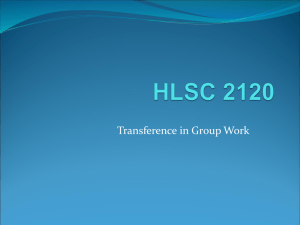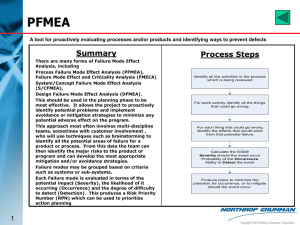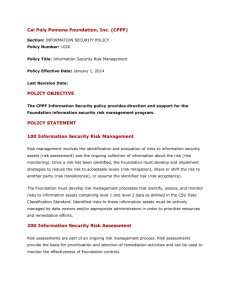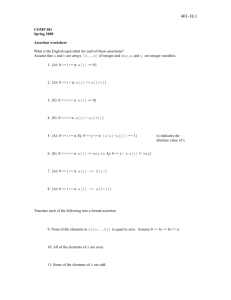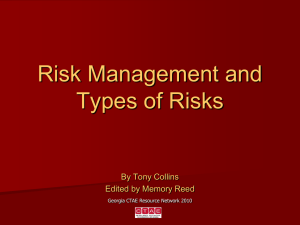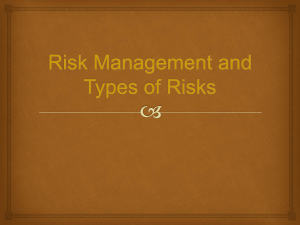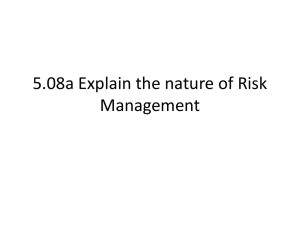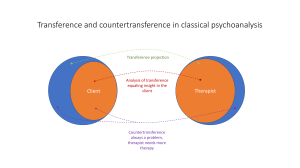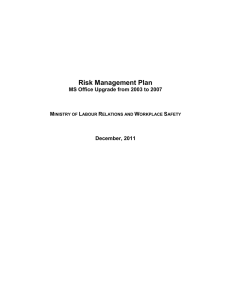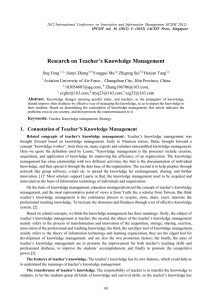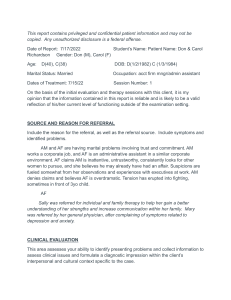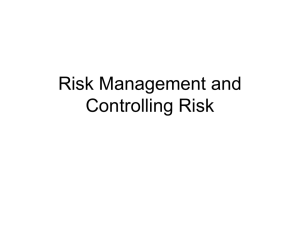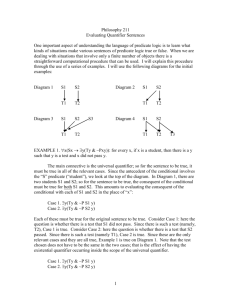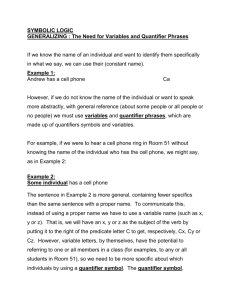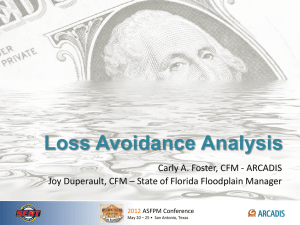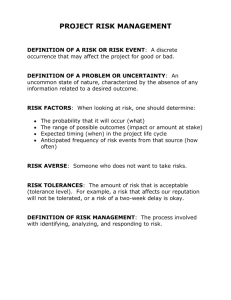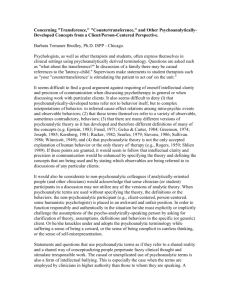Identifying Risk and Risk Treatment Plan
advertisement
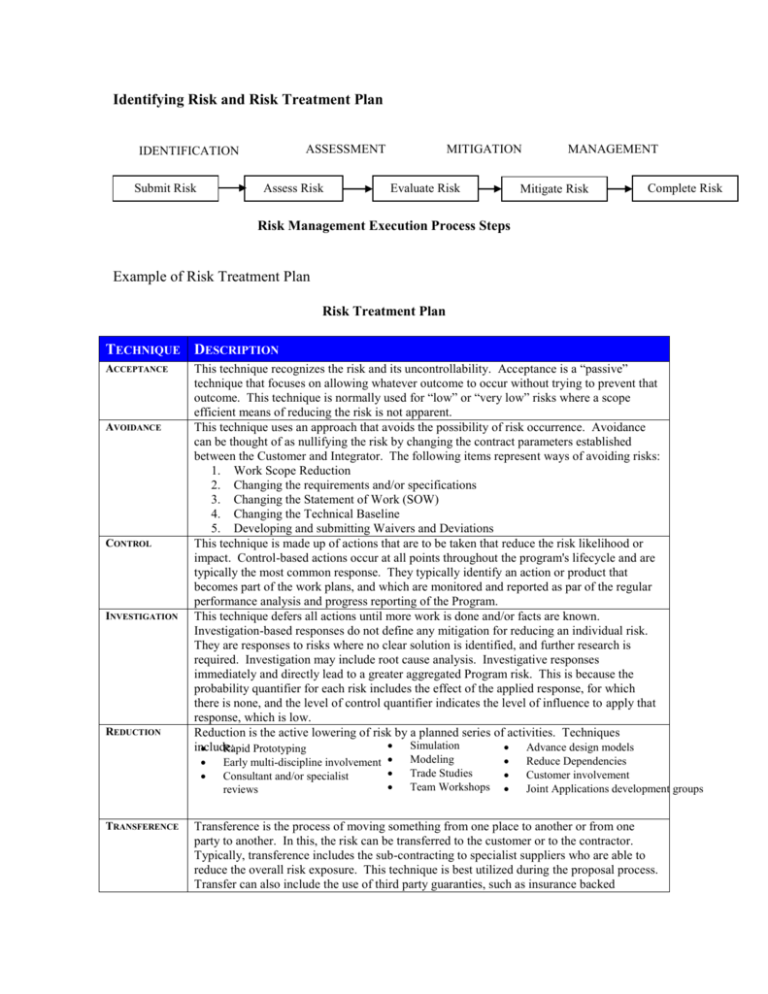
Identifying Risk and Risk Treatment Plan ASSESSMENT IDENTIFICATION Submit Risk Assess Risk MITIGATION Evaluate Risk MANAGEMENT Mitigate Risk Complete Risk Risk Management Execution Process Steps Example of Risk Treatment Plan Risk Treatment Plan TECHNIQUE DESCRIPTION ACCEPTANCE AVOIDANCE CONTROL INVESTIGATION REDUCTION This technique recognizes the risk and its uncontrollability. Acceptance is a “passive” technique that focuses on allowing whatever outcome to occur without trying to prevent that outcome. This technique is normally used for “low” or “very low” risks where a scope efficient means of reducing the risk is not apparent. This technique uses an approach that avoids the possibility of risk occurrence. Avoidance can be thought of as nullifying the risk by changing the contract parameters established between the Customer and Integrator. The following items represent ways of avoiding risks: 1. Work Scope Reduction 2. Changing the requirements and/or specifications 3. Changing the Statement of Work (SOW) 4. Changing the Technical Baseline 5. Developing and submitting Waivers and Deviations This technique is made up of actions that are to be taken that reduce the risk likelihood or impact. Control-based actions occur at all points throughout the program's lifecycle and are typically the most common response. They typically identify an action or product that becomes part of the work plans, and which are monitored and reported as par of the regular performance analysis and progress reporting of the Program. This technique defers all actions until more work is done and/or facts are known. Investigation-based responses do not define any mitigation for reducing an individual risk. They are responses to risks where no clear solution is identified, and further research is required. Investigation may include root cause analysis. Investigative responses immediately and directly lead to a greater aggregated Program risk. This is because the probability quantifier for each risk includes the effect of the applied response, for which there is none, and the level of control quantifier indicates the level of influence to apply that response, which is low. Reduction is the active lowering of risk by a planned series of activities. Techniques Simulation include: Advance design models Rapid Prototyping TRANSFERENCE Early multi-discipline involvement Consultant and/or specialist reviews Modeling Trade Studies Team Workshops Reduce Dependencies Customer involvement Joint Applications development groups Transference is the process of moving something from one place to another or from one party to another. In this, the risk can be transferred to the customer or to the contractor. Typically, transference includes the sub-contracting to specialist suppliers who are able to reduce the overall risk exposure. This technique is best utilized during the proposal process. Transfer can also include the use of third party guaranties, such as insurance backed TECHNIQUE DESCRIPTION performance bonds.
